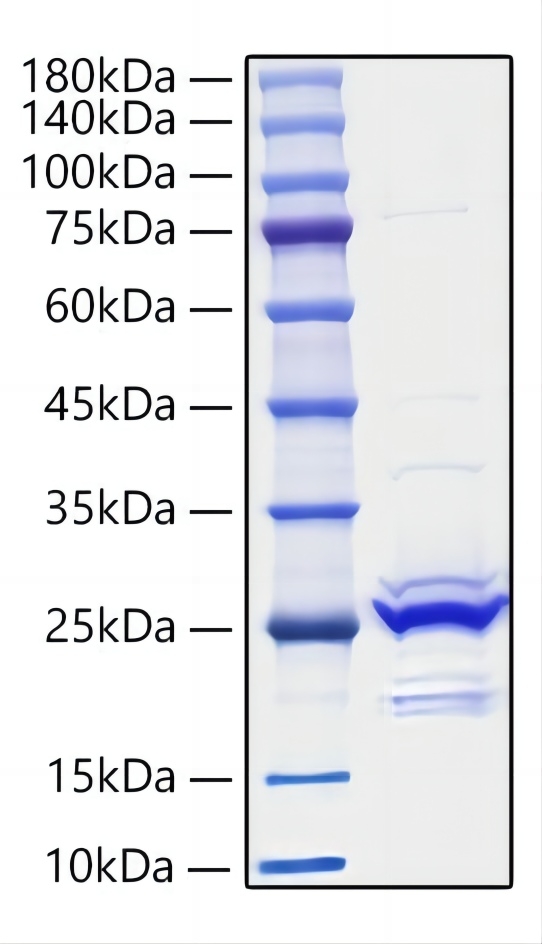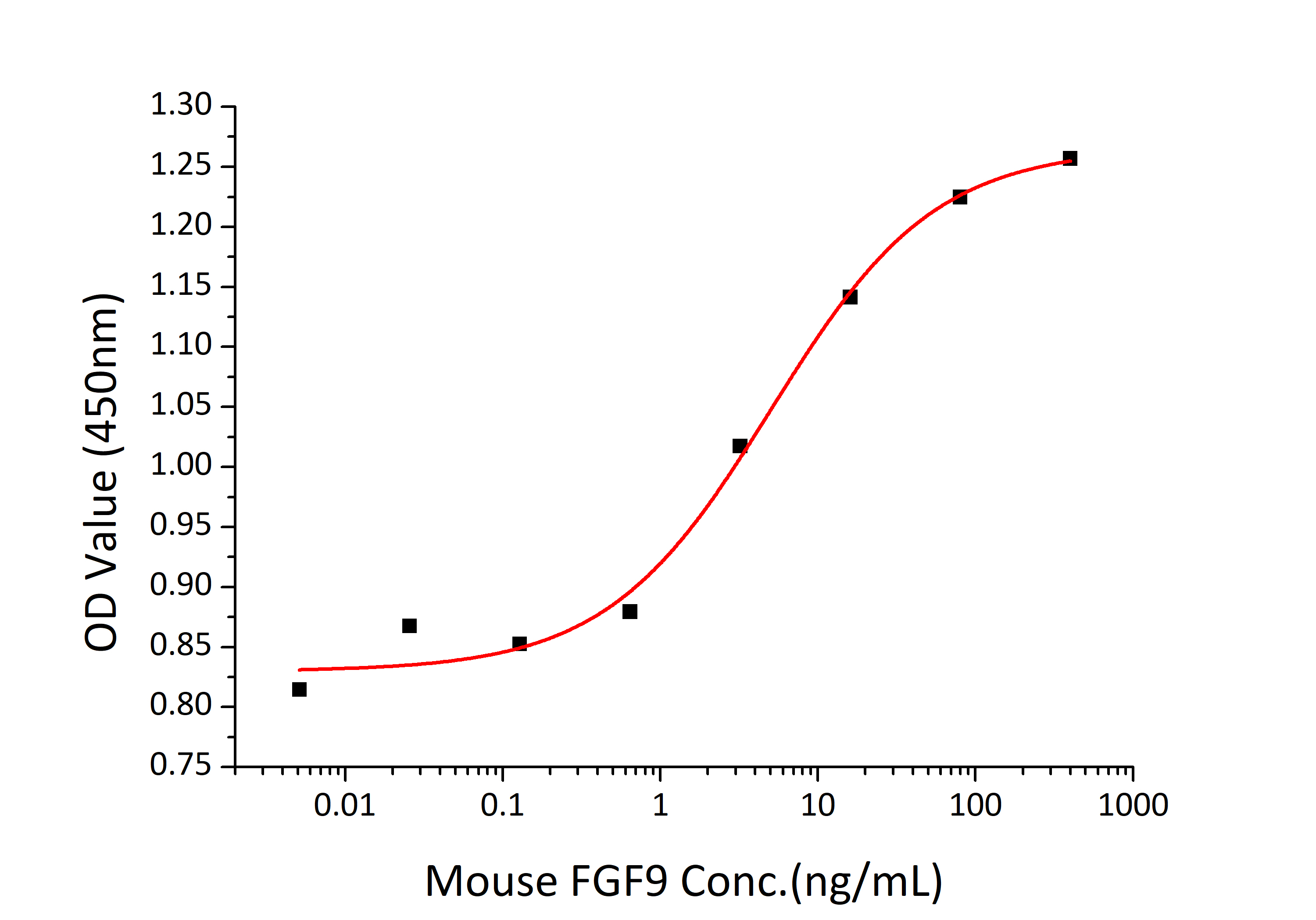Description
Recombinant Mouse FGF-9 Protein
The Recombinant Mouse FGF-9 Protein is a high-quality recombinant protein designed for murine biological research applications. This protein serves as an essential reagent in mouse model studies, comparative immunology research, and preclinical therapeutic evaluations, enabling scientists to investigate FGF-9 biology and its relevance to human disease mechanisms through translational research approaches.
This product (SKU: RPCB1222) is produced using advanced expression systems and features a No-tag tag for convenient detection and purification. The protein exhibits a calculated molecular weight of 23.41 kDa with an observed molecular weight of 25-30 kDa under denaturing conditions, achieving ≥ 90 % as determined by SDS-PAGE.. Functional bioactivity has been validated through rigorous quality control assays, confirming its suitability for demanding research applications.
Key Features
| High Purity by Affinity Chromatography | |
| Mammalian & Bacterial Expression Systems | |
| High lot-to-lot consistency via strict QC |
| Product Name: | Recombinant Mouse FGF-9 Protein |
| SKU: | RPCB1222 |
| Size: | 10 μg , 20 μg , 50 μg , 100 μg |
| Reactivity: | Mouse |
| Synonyms: | Fibroblast growth factor 9, FGF-9, Glia-activating factor, GAF, HBGF-9,Fgf9, Fgf-9 |
| Tag: | No-tag |
| Calculated MW: | 23.41 kDa |
| Observed MW: | 25-30 kDa |
| Gene ID: | 14180 |
| Protein Description: | High quality, high purity and low endotoxin recombinant Recombinant Mouse FGF-9 Protein (RP01840LQ), tested reactivity in E. coli and has been validated in SDS-PAGE.100% guaranteed. |
| Endotoxin: | < 0.1 EU/μg of the protein by LAL method. |
| Purity: | ≥ 90 % as determined by SDS-PAGE. |
| Formulation: | Supplied as a 0.22 μm filtered solution of solution of 20mM Tris-HCl, 250mM NaCl, 1mM EDTA, 20% Glycerol, 1mM DTT, pH 8.5 |
| Bio-Activity: | Measured in a cell proliferation assay using BALB/3T3 mouse fibroblasts. The ED 50 for this effect is 2.52-10.06 ng/mL, corresponding to a specific activity of 9.94×10 4 ~3.97×10 5 units/mg. |
| Reconstitution: | Centrifμge the vial before opening. Reconstitute to a concentration of 0.1-0.5 mg/mL in sterile distilled water. Avoid vortex or vigorously pipetting the protein. For long term storage, it is recommended to add a carrier protein or stablizer (e.g. 0.1% BSA, 5% HSA, 10% FBS or 5% Trehalose), and aliquot the reconstituted protein solution to minimize free-thaw cycles. |
| Storage: | Store at -70℃. This product is stable at ≤ -70℃ for up to 1 year from the date of receipt. For optimal storage, aliquot into smaller quantities after centrifugation and store at recommended temperature. Avoid repeated freeze-thaw cycles. |
Fibroblast growth factor 9 is also known as FGF9, GAF, HBFG-9, SYNS3, and is a member of the fibroblast growth factor (FGF) family. FGF family members possess broad mitogenic and cell survival activities, and are involved in a variety of biological processes, including embryonic development, cell growth, morphogenesis, tissue repair, tumor growth and invasion. FGF9 is also a mitogen for oligodendrocyte type 2 astrocyte progenitor cells, smooth muscle cells, pheochromocytoma PC12 cells, and BALB/3T3 fibroblasts. However, unlike FGF acidic and basic, FGF9 has no effect on human umbilical vein endothelial cells, and it has been demonstrated that FGF9 binds preferentially to the IIIc form of FGFR3. Although no typical signal sequence was found in FGF9, it is secreted efficiently after synthesis not in a conventional manner. In nervous system, FGF9 is produced mainly by neurons and may plays an important role in CNS development. FGF9 has been shown to interact with Fibroblast growth factor receptor 3.








